Not only is India a true pearl culturally, but the country also has a fascinating, highly varied landscape and a diverse range of Travel Guide To India’s Wildlife. In recent years, several national parks, game reserves, and protected areas have been created to protect this wonderful nature. Since the first national park was created in 1937, the number of protected areas in India has increased significantly, especially since the 1970s. The Bengal tiger, which is threatened with extinction, is particularly important and numerous game reserves have been set up to protect it.
In total, there are now around 550 game reserves and 446 nature reserves across India, a total area of almost 6 percent of the country. Spread across India with its different climate zones, the different national parks offer a wide range of animals and plants. Even if the large animals such as elephants, tigers, leopards, and rhinos are particularly attractive, India’s national parks have a lot more to offer.
A safari through the dense jungle, the vast steppe-like areas, or the snow-capped mountains in the north of the country will remain in the memory of visitors to India for a long time in Travel Guide To India’s Wildlife.
- Tiger Count
- Experts and Guides for Wildlife & Nature
- The Best Time to Visit The Parks
- When and How to Book you Tiger Safari in India
- Choose the Best Tour Operator
- Classification of Safari Tour
- Weather Conditions in the Parks
- Closure of Tiger Reserve During Diwali Festival
- Clothing Tips for Safari in the National Parks in India
- Safari Schedules
- Elephant Safari and Tiger Encounter
- Our Wildlife Safari & The Local Population
- Important Tips for a Wildlife Holiday
- Differences Between African & Indian Safaris
- India & Nature Protection
- How to Spot a Tiger
- Which Parks are Available ?
- Other Wild Treasures of India
- How do you Making a Booking?
When most people think of India, the beautiful Taj Mahal, the pink city of Jaipur or bustling Delhi come to mind. But India is not only known for its architectural wonders, ancient monuments, and shrines but also for its breathtaking nature, which makes the hearts of all nature lovers and animal lovers beat faster. The country is peppered with natural wonders, endless forests, lush river valleys, vast grasslands, and, last but not least, an extraordinary Travel Guide To India’s Wildlife. For centuries, travelers from all over the world have flocked to enjoy and study the magnificent nature, impressive landscapes, and rich diversity of fauna and flora.
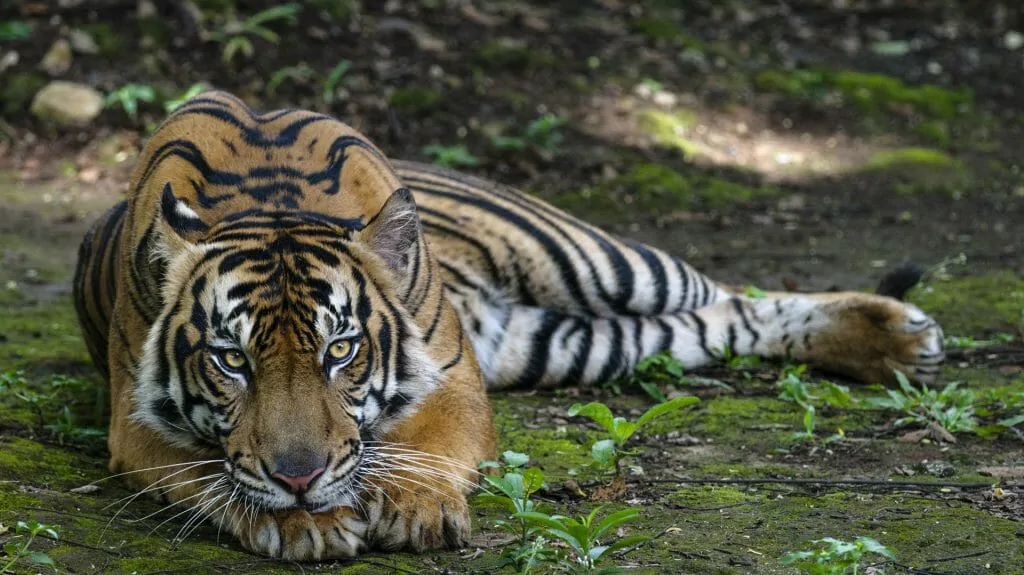
Tiger Count
India conducts a tiger census every four years. As of the 2014 census, the tiger population has increased to 2,226 from 1,706 in 2010. At the last count in 2008, only 1,411 tigers were counted. These data prove that the significant measures taken to protect and conserve tigers in India fifty years ago are bearing fruit.
Update: On World Tiger Day, July 29, 2019, it was announced that a total of 2,967 Bengal tigers were counted in the 2018 count. This represents a significant increase. The country managed to double the tiger population four years ahead of its 2022 target. The state leading the way in this regard is Madhya Pradesh, where 218 more fabulous big cats now roam the country, bringing the total to 526 animals.
2022 Update: The latest census by the Wildlife Institute of India shows that the tiger population in India increased from 2,967 in 2018 to 3,682 in 2022. Three quarters of the tiger population, i.e. H. Around 2765 tigers live in tiger reserves, which consist of national parks and tiger reserves.

Experts & Guides for Wildlife – Nature Safari Tour
On safaris, you will always be accompanied by a government-appointed guide, whether you have a guide from your hotel or lodge. It is their responsibility to enforce safety regulations, ensure that no one gets out of vehicles, that all visitors leave the park at closing time, and to help search for tigers. If you would like an expert in the field of ornithology, the environment, zoology or similar topics, we will be happy to take care of it.
The Best Time to Visit National Parks in India
The reserves and national parks in India open in early October and usually close in late June after the start of the monsoon season. If your main goal is to see tigers, February to mid June are the best months as watering holes are limited and the animals congregate at drinking holes. The vegetation is also less dense, making it easier to spot tigers. Alternatively, you can plan your trip for May/June, but keep in mind that temperatures rise during this time. The months of November to January are also recommended as the weather is good and the air is clear. During this period the landscape is at its most beautiful thanks to its lush vegetation. But this also means that it is harder to spot wild animals in the lush greenery.

When & How to book your Tiger Safari Tour
Permits for wildlife safaris in India are limited. Because they are so popular, the slots are booked up pretty quickly. Most national parks and tiger reserves in central and northern India offer an online booking system. The booking can be made at the earliest 120 days before the safari date. The principle applies: “First come, first served”. It is best to plan your wilderness vacation in India at least 5 to 6 months before the safari date so that we have enough time to book the best available safari zones according to your requirements. During booking, you must provide your tour operator with the required ID (passport) details and pay a deposit. A few national parks, including Sariska and Ranthambore, accept bookings 15 to 60 days before the safari date.
Choose The Best Tour Operator
Finding the best operator to plan your safari in detail is essential for various reasons. National parks are usually divided into an outer buffer zone and an inner core zone. Tourists mostly prefer the smaller, inner core areas as the chances of seeing tigers and other wildlife are greater. However, as tiger populations increase, the big cats also roam the larger buffer zones more and more frequently. This has led some tour operators to also consider these zones as high density areas. However, each safari only covers one of the two zones. That’s why we make sure to alternate the zones for your multiple safari trips.

The organizer should know which zones of each reserve to book to achieve the best results. But that is far from enough to ensure successful viewing. At the same time, he must be familiar with the sighting history of the various areas. Conditions can change quickly, so it needs to be up to date to meet your expectations. It is also important to hire a travel company with many years of experience who literally has their eyes and ears on site. This way you won’t be disappointed and the experience will be worth your money. Because we are in constant contact with the naturalists in all parks and reserves, we are always up to date on the best zones for tiger sightings. It should be said that tiger sightings can never be guaranteed. But an experienced and trustworthy tour operator knows which zones of which reserves and during which months you should book your safari. So your expectations of meeting these magnificent animals in the wild can come true.

Classifications of Park Safari
Safari tours are rated ‘A’. This means “easy” as you will spend most of your time in a Jeep. Getting out of open vehicles is not permitted within the park. You only move around the area around the lodges on foot. Safaris are conducted in the morning, afternoon and evening.
Weather Conditions in the Park
In northern and central India, temperatures in the parks vary significantly depending on the season and time of day. If you plan to visit between October and March, especially between November and January, it can get very cold in the hours before sunrise. Dress appropriately for your early morning safaris as they travel in open jeeps. Additionally, there is usually a cold headwind blowing on the way to the park entrance. The lodges provide blankets. However, bring a windproof jacket, gloves and a sturdy hat and it is best to wear several layers. As soon as we stop for the picnic breakfast, the temperatures are much more pleasant between 15 – 25˚C. From March to May temperatures rise. During this time you will need a sun hat, sunscreen and airy cotton clothing. If you have any questions about a detailed packing list or weather conditions, we are happy to help.
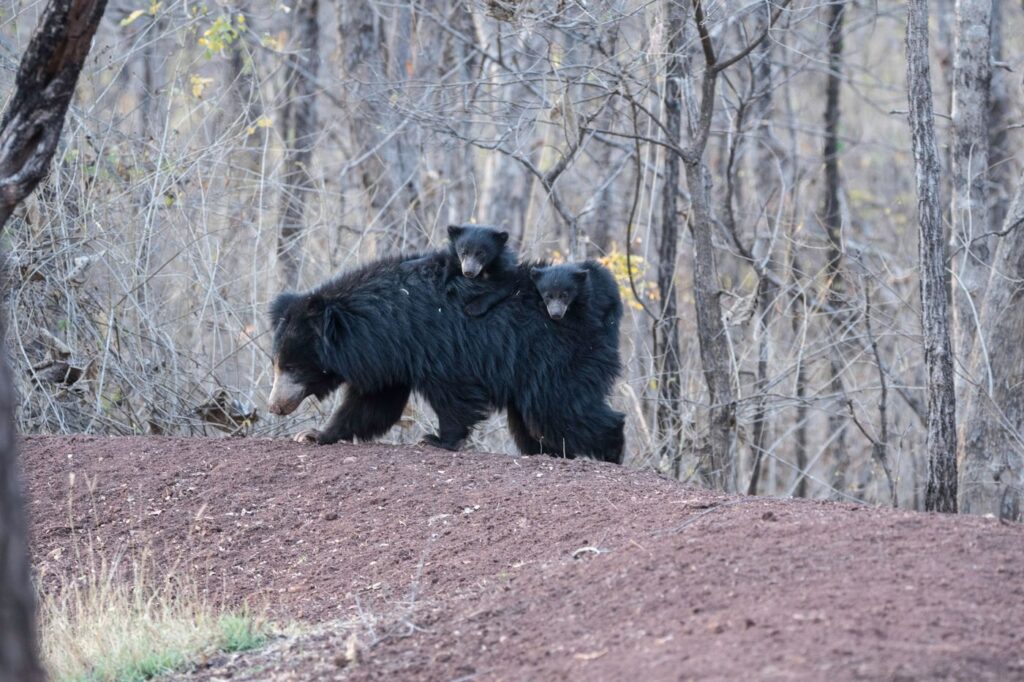
Accommodation
All meals and overnight accommodation are included during your stay at one of the parks. In cities such as New Delhi and Mumbai, you pay for meals out of your own pocket. In the park lodges and hotels, meals are usually served as buffets of Western and Indian food. The service is always excellent and in some luxury resorts you can even ask the chef to prepare special dishes to your liking. Among the typical dishes you will find soups, chicken, mutton or goat curries, various vegetables, chapatis, rice and of course a generous selection of desserts. These include both non-vegetarian and vegetarian dishes and the menu changes constantly, so the choice never gets boring. Some hotels also offer Chinese cuisine. One thing is for sure: meals in the parks will be one of the highlights of your visit.
Close of Tiger Reserve During Diwali Festival
This festival marks an important date in the central Indian holiday calendar and all parks are closed for a day or two during it. So no safaris can be carried out on these days, which could interrupt your planned tiger trip. Unfortunately this is out of our hands, but instead we offer you a visit to a nearby village where you can take part in the celebrations and learn more about the traditions surrounding this festival. Passionate bird watchers have the chance to study the many species of birds on some of the short trails surrounding the lodge grounds. Here you can find the dates for the upcoming festivals: November 12th, Nov’23 & 28 Oct’24.
Close of Tiger Reserves During Holi Festival
India celebrates numerous festivals throughout the year, but the colorful Holi stands out as a joyful festival of hope and happiness. The festival celebrates the death of the demon Holika and the beginning of spring with lots of fun and bright colors. People of all skin colors and beliefs leave their everyday lives behind to have a great time.
Even during Holi, the reserves and parks stop operations for a day or two. This may impact your travel planning and safaris, but you may want to take the opportunity to experience a different side of Indian culture. Join the celebrations and learn more about this significant religious and cultural event and the centuries-old Hindu traditions, while sharing in the exhilarating joy of the participants. If you prefer something quieter, spend a peaceful and relaxing day at the lodge. Or connect with nature and take a stroll around the lodge grounds to spot the many species of birds. As road travel is discouraged during Holi, we are unable to organize alternative excursions. The dates for the next two Holi festivals are: March 25, 2024, March 14, 2025 and March 3, 2026.
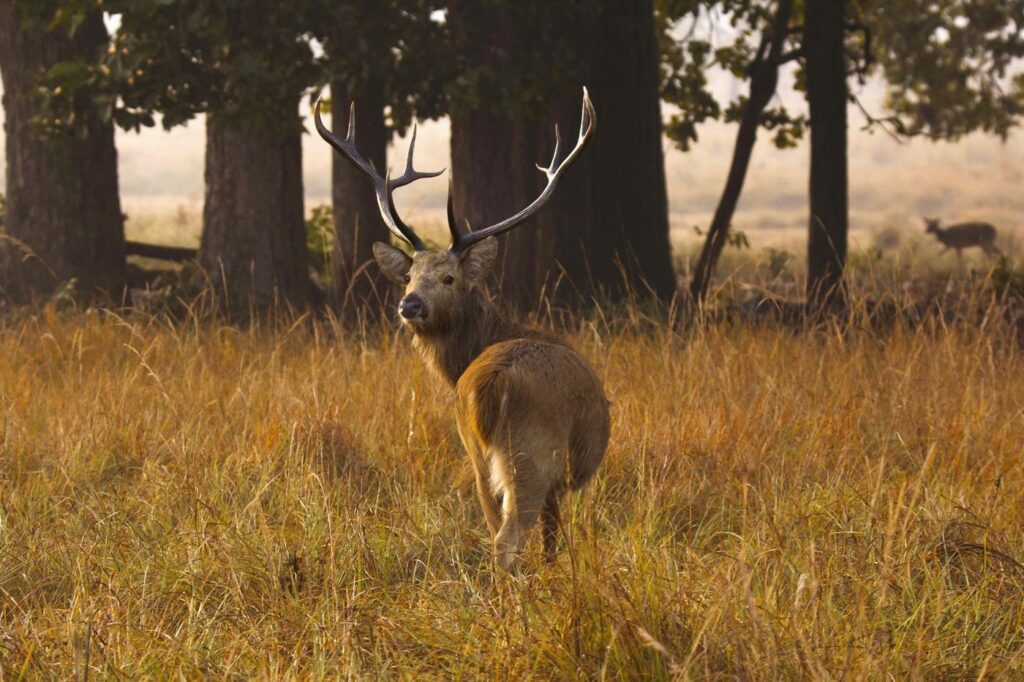
Clothing Tips for Safari in National Parks in India
It is particularly important that you pack comfortable clothing for your safari tour. When temperatures drop dramatically in the evenings and early mornings in November, December, January and February, you should wrap up warm in several layers. On the other hand, we recommend light clothing made from natural fibers for the warm summer period from March onwards. Choose neutral, natural colors such as beige and khaki because you want to look as inconspicuous as possible so as not to scare away birds and animals. You need a wide hat to protect you from the intense sun rays and a scarf to protect your face from dust. Your passport, sunglasses, sunscreen, camera equipment and binoculars should also be on the list. We also recommend tipping a few rupees to pack your own water bottle, wet wipes, hand sanitizer and tissues.
The Destination of Safari in India
Our goal is for our visitors, who are without exception avid nature lovers, to see as many species of animals and birds as possible. Of course, the focus is on encounters with tigers, but the parks are also home to large populations of other mammals, reptiles and birds. Some are more shy than others and it is always an event to spot endangered or endangered animals.

Safari Schedules
Schedules differ from season to season as they depend on sunset and sunrise. In summer, the gates open at 5:30 a.m., so we have to leave our accommodation 15 to 20 minutes beforehand in order to arrive on time. A jeep with a naturalist on board will pick you up at your hotel. So please wait on the hotel veranda. Coffee, tea and cookies are served at 5 a.m. The summer afternoon safaris start at around 2:30 p.m. The average duration of each trip is three hours. All times are subject to change at any time. You can find the schedules here:
Winter (October – March)
- Tomorrow 6:00 a.m. to 10:00 a.m
- Afternoon 2:30 p.m. to 5:30 p.m
Summer (April – June)
- Tomorrow 5:30 a.m. to 9:30 a.m
- Afternoon 3:00 p.m. to 6:30 p.m

All Central India National Parks are closed on Wednesday Afternoon
Currently, all reserves and national parks in Madhya Pradesh close on Wednesday afternoon, including Bandhavgarh, Satpura, Panna, Pench and Kanha Tiger reserves. This afternoon of our main trip we travel from one national park to the next so that the closure does not impact our activities. In the event that our itinerary is affected despite everything, we will arrange alternative nature activities in nearby biotopes or you can explore the hotel grounds this Wednesday afternoon.
Please note that tiger reserves in Rajasthan like Sariska and Ranthambhore are open on Wednesday afternoon.
Elephant Safari & Tiger Encounter
In the Kanha and Bandhavgarh national parks, the striped big cats can be observed in a unique way, during the so-called tiger shows. Tamed elephants are used to track tigers in the early hours of the morning. As soon as animals are discovered, the tour guides waiting with their guests in the jeeps are informed. After receiving the necessary coupon from a ranger to avoid paying a surcharge, vehicles meet nearby. Now the tourists climb onto the elephants, no more than four people per mahout, and go on the backs of the elephant to a distance of about 3 meters from the tigers. The elephants can get so close to the tigers without putting themselves or these magnificent cats under undue stress. For around 5 to 10 minutes you can view the animals up close and have the perfect opportunity for a few unique photos. You might even witness a family of tigers devouring their prey or drinking together at a watering hole. Remember that this opportunity depends on the success of the rangers and their elephants in tracking the tigers. But there is no reason for premature disappointment: the success rate is usually around 85 percent.
Apart from that, there is the option of a full-day elephant safari, four hours in the morning and three hours in the afternoon. Book one month in advance and we will inform you of the costs.

Our Wildlife Safaris & The Local Population
We only hire people from local communities as tour guides. Not only are they able to spice up your lifelong experience with their in-depth knowledge of local folklore, but they are also familiar with the names of animals and plants as well as their uses in traditional medicine. During their time together, they can tell you about the local gossip and the antics of the animals. During our visits to remote villages, they act as our hosts, ensuring that our visits are a genuine cultural exchange and not just a superficial incursion into the communities’ privacy

Interesting Information about Tiger
• Tigers are the largest cat species.
• The Bengal tigers found in Indian national parks belong to the species Panther tigris tigris.
• Around 75 percent of the world’s wild tigers are in India.
• The Bengal tiger is the most common tiger species in the world.
• Safari comes from the Swahili word “safar,” which means “journey.” Europeans who came to Africa at the end of the 19th century adopted the word and transformed it into the common term safari. Today the word refers to an expedition or journey primarily for hunting, research or exploration, usually with guides, equipment and vehicles.
Intersting Information about International Tiger Day
During the St. Petersburg Tiger Summit in Russia in 2010, the thirteen countries that have tiger reserves came together and committed to doubling the tiger population by 2022. Since then, International Tiger Day has been celebrated every year on July 29th. A recovery plan, the TX2, was drawn up to help countries achieve this goal.

Important Tips for a Nature Vacation in India
- India is one of the few places on our planet where tigers can be seen in their natural habitat. Since thousands of tourists from all over the world visit the parks every year, some of these wonderful cats have become accustomed to the movement of vehicles and people. But it is important to remember that they remain dangerous and ferocious predators and should always be treated as such. It is an unlikely privilege to see these majestic and incomprehensible creatures outside of a zoo. You must allow yourself at least 3 to 4 days to successfully observe a tiger. So the chances are good to Travel Guide To India’s Wildlife.
- In my opinion, a visit to a tiger reserve should not be termed as “tiger watching”. Of course, encountering tigers is the dream of most nature lovers. But even if they play the main role, you’ll miss a lot if you limit your experience to just one species and ignore the others. Indian national parks offer much more. During your tiger hunt, don’t miss the opportunity to discover the fabulous variety of birds, reptiles, and other mammals. Instead of just scanning the park for tigers, stop near a waterhole or lake, sit down, close your eyes, and open your ears: the symphony of birdsong in the bush will enchant you. Feast your eyes on the animals, big and small, that gather around the water, watch the sun’s rays pierce the tops of the trees, and let your soul soar in the beauty of nature. Because that’s really what it’s about.
- Never leave the Jeep. Follow your naturalist guide’s instructions and always remember that you are not in a movie. Tigers are not cuddly animals and it is forbidden to enter the nature and terrain of their wild inhabitants without permission.
- Keep noise levels low. Animals are scary. They can go into defense mode and attack your vehicle.
- Jeep safaris that accommodate a maximum of six passengers are preferable to the 20-seater ones used in Ranthambore. Kanha, Bandhavgarh, Panna and Pench offer jeep safaris only.
- Dust can be a problem since all park roads are gravel. Carry cleaning cloths for your camera and a good cover, especially for DSLR cameras.
- We want to keep parks clean and natural, so make sure you don’t leave any trash behind.
- In general, animals are much more sensitive to odors than humans. The smell of strong perfumes and deodorants could irritate them. This is why you should avoid anything with a strong smell.
- The main objective of a national park is to preserve natural wildlife and not to entertain visitors. The influx of people and the constant demands of tourists and guests are increasingly putting a strain on authorities and their employees. By complying with the rules of conduct and all regulations, you support those responsible in their demanding task.
- To make the most of your visit, especially if you are an avid bird watcher, be sure to bring a good pair of binoculars.
- Always have your passport ready as checks are carried out at park entrances. If officers cannot match your identity with your reservation, you will be denied entry. Once in the park, you are not allowed to leave or re-enter the park, even if you forget something at the lodge. So make sure you pack everything you need for the safari.
- For jeep or elephant safari we require a copy of your passport and full payment in advance. Reservations are made on a first come, first served basis. The park authorities have the right to cancel safaris at any time. In this case, the deposit is non-modifiable, non-transferable and non-refundable.

Differences Between African & Indian Park Safari
Don’t assume that a safari in an Indian national park will be the same as a safari in Africa. In general, African safaris are not tied to schedules to the same extent as those in India. That’s why it’s not unusual to wait several hours for the wildlife to show themselves. In India, the lodges and resorts are located outside the park boundaries and there are specific times set aside for safaris. After each safari, you must leave the park and return to your off-site accommodation. Of course, your guide will want to delight his guests with as many sightings as possible in the shortest amount of time, which is why he could go on a wild mission through forests and grasslands in search of tigers.
India offers a much wider variety of accommodation near its parks, from luxury to budget. Everyone knows that you usually get what you paid for, that’s life. From our own experience, all accommodations are well managed and clean, regardless of their number of stars. If one wants luxurious accommodation in Kanha, Bandhavgarh, Pench and Panna, Taj Group is suitable. Ranthambore is where you will find Oberoi’s luxurious Raj Vilas. These upscale resorts have experienced tour guides and naturalists to accompany guests on safaris.
In India, you travel either by train, plane or in a chauffeur-driven vehicle. Because the country is so large, the distances can seem overwhelming. However, the landscape is invariably enchanting and the paths feel shorter than they are. Although there are many domestic flights between the major cities and those closer to the national parks, we still have to take the road every now and then to get between different parks and airports.
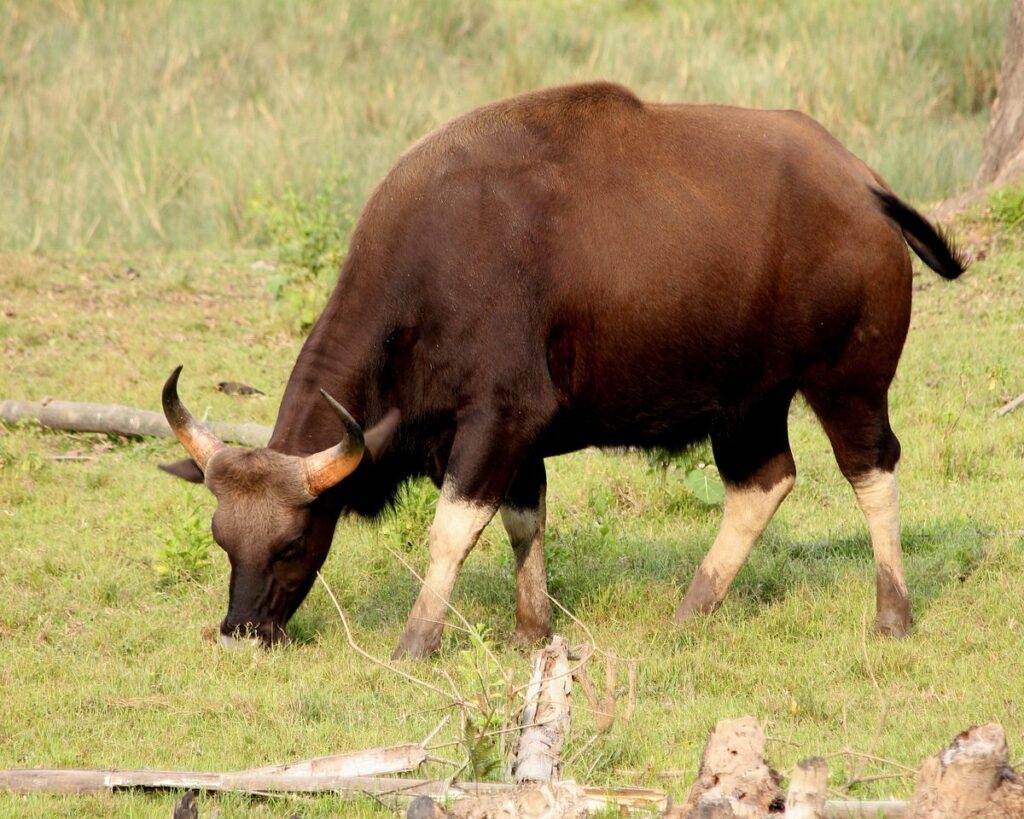
The distribution of animal species in Africa and India also differs. The African plains are teeming with herds of gazelles and antelopes, which are less common in India. But the sheer abundance of deer, including the tiny deer piglets and the large sambar or horse deer, found in India makes up for it. Travelers to Africa are eager to check the so-called “Big Five” off their list: lions, leopards, rhinos, elephants and buffalo. India has its own Big Five list, but not all animals are found in the same region. For example, Asian elephants can only be found in the wild in northern parks such as Corbett National Park, in the northeastern parks of Kaziranga and Manas and in southern parks such as Mudumalai and Periyar Tiger Reserves as well as in Kabini and Nagarhole National Parks.
Indian rhinos roam only in the parks of Kaziranga and Manas, while Asiatic lions are restricted to Gir Forest of Gujarat. Leopards are spotted more often, sometimes even on the outskirts of big cities, but they are shy and difficult to spot. Your chances are better in the Jhalana and Bera Jawai leopard parks in Rajasthan and the southern Kabini and Satpura national parks in Madhya Pradesh. Here you may also spot the real Bagheera, a magnificent black panther (often spotted in the Kabini Tiger Reserve). You don’t have to travel far to find Indian bison or gaur, as they are quite widespread, for example in Kanha and Kaziranga and in numerous southern Indian parks.
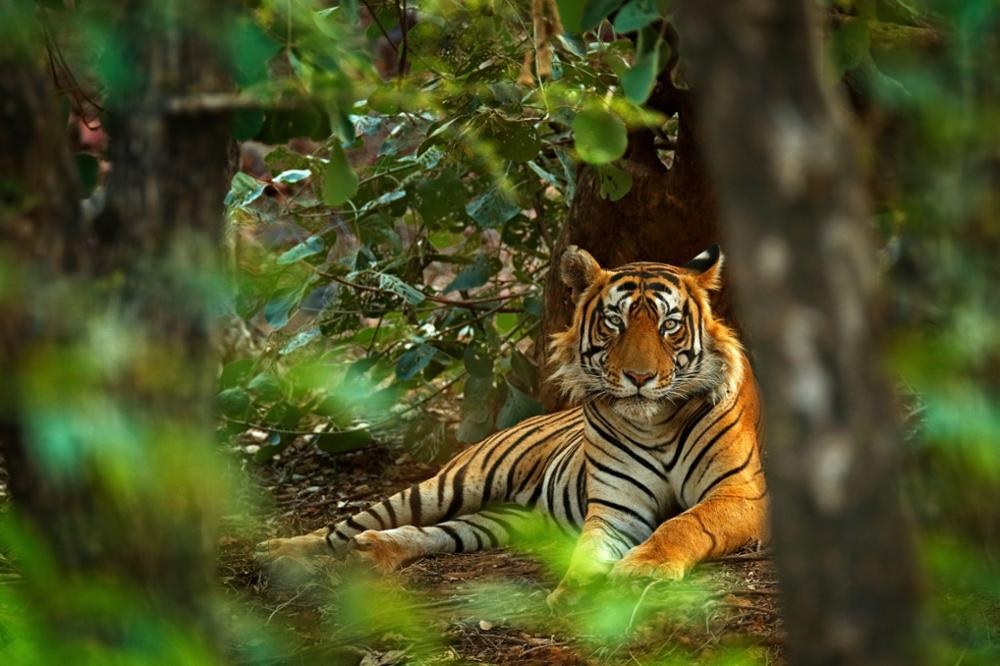
India & Nature Protection
India faces many challenges, including poverty and pollution. With a population of more than 1.40 billion people, this is not surprising. However, having personally visited numerous tiger reserves and national parks over and over again, my honest assessment is that the country as a whole is doing very well when it comes to preserving its natural habitats and wildlife. Animals are an integral part of Indian beliefs and culture. Many are considered sacred, such as the elephant deity Ganesh. Accordingly, the country’s rich wildlife is of great importance and extremely attractive to many people.
However, most safari tourists only have one destination in mind, namely the mighty Bengal tiger, the national animal of India. Some may view this as narrow-minded, even obsessive. But one thing leads to another, and a people who have such passion for their crown jewel will inevitably work to save their habitat and their fellow creatures. Some time ago a famous tiger killed a game warden, the fifth in charge of him. But when people learned he was going to be sent to a zoo, they were so outraged that nationwide vigils were held. Hard to believe, but a court case followed. And although Ustad was not released back into the wild, the deep concern of an entire nation for this beast was absolutely remarkable.
The death of every tiger, whether due to natural causes or not, is printed on the front pages of all newspapers. And that is unique. In contrast, on the African continent, leopards, cheetahs and lions are repeatedly shot, captured or poisoned without batting an eyelid. The only objection comes from conservationists. When Ranthambore’s famous tigress Machali died just before her twentieth birthday, she was even buried according to Hindu tradition. She was the oldest tigress ever. You can read her full story in National Geographic under Tigress Machali or watch the documentary “The Queen of Ranthambore – The Most Photographed Tigress in the World”.
The birth of a tiger cub is of similar importance to all residents of India and is reported everywhere. Here are a few examples of headlines:
March 2020: Panna Tiger Reserve is pleased with the arrival of 3 tiger cubs
April 2020: Six-month-old tiger cub found dead in Pench Tiger Reserve
May 2020: Sariska’s tiger population increases from three new cubs to 20
September 2020: Tiger reclaims territory after 11 years, kills rivals
The biggest challenge today is to balance rapid population growth with the preservation and expansion of its nature reserves. But I look forward to this goal with full confidence because the entire population is behind this project. India’s Tigers have a bright future ahead of them.

How to Spot a Tiger
The “Big Five” of India were mentioned earlier. You may have noticed that the main attraction, the mighty tiger, is not there. The country’s over 50 tiger reserves are under the auspices of Project Tiger, an initiative launched in 1972 to save and preserve the remaining tiger population and their natural habitats. Tigers are rare and shy wild animals that are usually not easy to spot. However, you can increase the odds in your favor in one way or another.
The more time you invest, the better your chances are. For this reason, I recommend a stay of at least three nights. The parks differ in terms of their tiger density. Some landscapes are easier to visit, such as the Bandhavgarh Tiger Reserve. Another crucial factor is the time of year. The winter months can be bitterly cold, so tigers come out later in the morning to warm up, and usually only after the last jeep has left the park. In mid-February the temperatures slowly rise and so does the activity of the tigers. During this time the undergrowth dries out and visibility improves. In May the thermometer can show temperatures of over 40˚C. But if the heat doesn’t bother you, this is certainly the best time to spot tigers gathering at water sources to drink and cool off.

Which Parks are Available?
Your best chance of a tiger encounter is in the national parks of Bandhavgarh and Ranthambore. The latter is not far from Delhi and the popular Golden Triangle, so it can get quite crowded at times. Bandhavgarh’s landscape is beautiful and known for its high success rate of tiger encounters. But sometimes the naturalist guides can be overly enthusiastic at times, leaving you on a wild goose chase for tigers rather than enjoying the beauty of the landscape and other fascinating wildlife. My personal favorites are Nagarhole and Kanha. Not only are great, in-depth game drives and bird watching available here, but also the opportunity for unique encounters with the locals. If you want to avoid crowds, Tadoba is less crowded and a good choice.
Indian elephants are another ever-popular attraction. If you want to combine the encounter with the elephant with your tiger safari, the southern Nagarhole and Bandipur parks are the best places to go. Nagarhole in particular is constantly striving to constantly increase its tiger population, so you are guaranteed to return home with some memorable images.
Many nature lovers long to delve deeper into nature and rural life. For those of you, I recommend a longer stay in Pench, Satpura, Panna or any of the national parks in Madhya Pradesh. This gives you enough time to relax and see all the sights one by one without putting yourself under any pressure.
In Kaziranga and Dudhwa in the north and northeast of the country you have the great opportunity to encounter tigers and spot Indian rhinos.

How do you make a booking ?
Booking an India Wildlife Tour is easy, quick and hassle-free. Simply send us an email or call us. To make a booking we need your passport details, including number, issue date and expiry date, as well as your date of birth. Please check that all details are correct as once the safari has been booked the details cannot be changed. So if you get a new passport after booking your vacation, still bring the old passport with you to enter the national parks.
Can Travel be Customized?
Naturally! Tell us your personal requirements and wishes and we will take care of the necessary arrangements. All our wildlife tour packages are flexible so you, our customer, have the final say. For example, in the past we have organized tours for guests who wanted to do seven safaris in four days or the same number in five days. Thanks to our extensive experience, we will be happy to advise you, make suggestions and answer all your questions. That is why we are here.
Interested?
Are you interested in this wildlife safari tour? Contact us at info@delightedjourney.com or WhatsApp Call you at +91 99106 31152 or online inquiry form to get in touch with one of our specialists. Browse through the large selection of wildlife trips in our online offering and check our page-India Travel Guide: Tips for traveling to India



